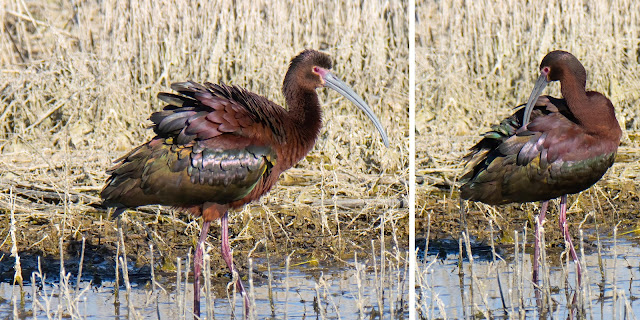This is part of a series about the Stevens Family Calendar (if you know, you know).
I am a birder. Caty likes photographing raptors and colorful birds. Scott likes raptors. Becca hates birds (but that is not relevent here). What is relevant is that it is inevitable that birds appear in the calendar.
They can be pretty. They can be dramatic. And, they can be very different from all the other photos – or the other birds I have posted over the years.
Yes, there are birds throughout the calendar (just look at the cover!), but this page is the catch-all for birds we photographed during our travels and at home. Plus, it has a smattering of bugs, butterflies and flowers, leading to lots and lots of color.
There were two main reasons I needed a bird page ...
#1: The hundreds of incredible photos I got of Horned Puffins on a small island (location to be kept secret) in Cook Inlet in Alaska.
 |
| Not only did I have close-up-and-personal access, but they were on a rocky cliff studded with colorful wildflowers; this is on the calendar page |
#2: The other was some incredible Hummingbird photos that Caty got in southern Arizona.
She worked very hard to get them and it paid off.
You already saw the hovering Broad-billed Hummingbird that appeared on the cover and the dispute that shows up in the opening ...
But, there were a few more great ones ...
... and, this one was, by far, the winner ...
 |
| A darn-near perfect photo of a Broad-billed Hummingbird by Caty Stevens |
 |
| I like this one, too, but not as much |
I even managed to get a few in the runner-up bucket, but (for obvious reasons), they didn't make the cut.
 |
| A nesting Black-chinned and a female Calliope Hummingbird |
Just like last month, the photos on the main page are closely aligned with the little squares on the calendar page, so here it is before I discuss any other photos.
 |
| A Trumpeter Swan Caty shot is on the back cover |
I wish there was some logic to it, but there really isn't.
Before I took that little break, I was discussing Arizona, which is a great birding destination. Hummingbirds weren't the only birds we saw there.
 |
| These four show up in the calendar: Summer Tanager (cover), Acorn Woodpecker (calendar page), Indigo Bunting and Hepatic Tanager (main page); Acorn Woodpecker photo: Caty Stevens |
 |
| These were not selected: Brown Creeper, Elegant Trogon and Scott's Oriole; Middle Photo: Caty Stevens |
 |
| These two Woodpeckers (Arizona and Acorn) also both missed out |
Of course, when we were in Ecuador, I photographed a lot of beautiful and colorful birds and butterflies. When putting the initial candidate together, I exercised a lot of restraint because I had so, so many colorful birds in the 2023 calendar.
 |
| I went to Costa Rica in 2022 and did this page in the 2023 calendar; see what I mean? |
Still, I ended up with lots of birds ...
 |
| ... an American Flamingo and Hoatzin on the April pages ... |
 |
| An Opal-crowned Tanager, left, on the April page; the Red Cracker Butterfly and Masked Tanager on the June main page ... |
When we spent Thanksgiving 2022 in Hawai'i, I photographed a lot of pretty birds ...
 |
| An Orange-cheeked Waxbill is on the calendar page and a Ring-necked Pheasant is on the cover ... |
 |
| ... plus lots of red: an 'Apapane, left, is on the calendar page and an 'I'iwi and 'Apapane, right, didn't get selected; Right photos: Caty Stevens |
 |
| Three photos of the adorable little Warbling White-eyes were in the running; we selected the left one for the main page |
Of course, we photograph birds all year long in multiple places, when we're traveling and, sometimes, at home.
 |
| Two favorites that just missed out: an American Robin in Cheyenne Canyon near our house and a White-breasted Nuthatch in our backyard |
 |
| The Bohemian Waxwing on the left was also in Cheyenne Canyon and the Hunt's Bumblebee was in Nevada; both are on the main page |
 |
| This Ruby-crowned Kinglet almost showed up on the October page; I shot it in the fall on the Blue Ridge Parkway |
 |
| Two perspectives on a Vermilion Flycatcher in Bosque del Apache National Wildlife Refuge; the one on the right won out and is on the back cover |
I always intend to include lots of colorful flowers, but they almost always get beaten out by birds. Here are some from Alaska and Hawai'i that I considered ...
 |
| Pretty colors |
 |
| ... and these weren't used ... |
 |
| ... nor were these |
That's it for June. As I said, we'll visit Alaska next.













































